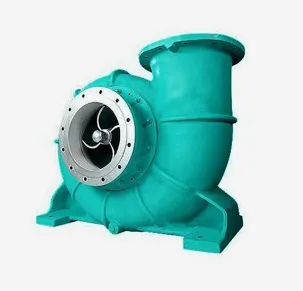Romanian
- Afrikaans
- Albanian
- Amharic
- Arabic
- Armenian
- Azerbaijani
- Basque
- Belarusian
- Bengali
- Bosnian
- Bulgarian
- Catalan
- Cebuano
- Corsican
- Croatian
- Czech
- Danish
- Dutch
- English
- Esperanto
- Estonian
- Finnish
- French
- Frisian
- Galician
- Georgian
- German
- Greek
- Gujarati
- Haitian Creole
- hausa
- hawaiian
- Hebrew
- Hindi
- Miao
- Hungarian
- Icelandic
- igbo
- Indonesian
- irish
- Italian
- Japanese
- Javanese
- Kannada
- kazakh
- Khmer
- Rwandese
- Korean
- Kurdish
- Kyrgyz
- Lao
- Latin
- Latvian
- Lithuanian
- Luxembourgish
- Macedonian
- Malgashi
- Malay
- Malayalam
- Maltese
- Maori
- Marathi
- Mongolian
- Myanmar
- Nepali
- Norwegian
- Norwegian
- Occitan
- Pashto
- Persian
- Polish
- Portuguese
- Punjabi
- Romanian
- Russian
- Samoan
- Scottish Gaelic
- Serbian
- Sesotho
- Shona
- Sindhi
- Sinhala
- Slovak
- Slovenian
- Somali
- Spanish
- Sundanese
- Swahili
- Swedish
- Tagalog
- Tajik
- Tamil
- Tatar
- Telugu
- Thai
- Turkish
- Turkmen
- Ukrainian
- Urdu
- Uighur
- Uzbek
- Vietnamese
- Welsh
- Bantu
- Yiddish
- Yoruba
- Zulu
Telephone: +86 13120555503
Email: frank@cypump.com
nov. . 05, 2024 15:53 Back to list
slurry pumps pdf
Understanding Slurry Pumps Essential Components in Material Handling
Slurry pumps are crucial components in various industries, particularly those dealing with the transportation of mixtures containing solids suspended in liquids—commonly referred to as slurries. These pumps are specifically engineered to withstand the challenging environments found in mining, mineral processing, waste management, and dredging applications. This article will outline the fundamental aspects of slurry pumps, their design features, operating principles, and applications.
What is a Slurry Pump?
A slurry pump is a type of centrifugal pump designed to handle abrasive and viscous fluids. Unlike standard pumps, which may become clogged or damaged when dealing with solid particles, slurry pumps have robust construction features to accommodate the physical and chemical stresses of slurries. They enable the transportation of minerals, chemical mixtures, and waste solids with ease and efficiency.
Key Design Features
One of the distinguishing characteristics of slurry pumps is their hydraulic design. They typically have a larger diameter impeller and a wider casing compared to conventional pumps, which allows them to move slurries effectively without creating excessive wear. The materials used in constructing slurry pumps are critical; they are often made from high-chrome alloys, rubber linings, or a combination of both to enhance durability against abrasion and corrosion.
The mechanical design of slurry pumps also includes features such as
1. Split Casings These facilitate easier maintenance and access to internal components. 2. Adjustable Impellers This allows for the optimization of pump performance based on specific slurry characteristics. 3. Multiple Wear Liners These can be replaced to prolong the pump's lifecycle without needing to replace the entire unit.
Furthermore, slurry pumps can be classified into two main types vertical and horizontal. Horizontal pumps are more commonly used for transferring slurries over longer distances, while vertical pumps are typically applied in applications involving high liquid levels or deep wells.
slurry pumps pdf

Operating Principles
The operation of a slurry pump is based on similar principles to those of a centrifugal pump. When the pump is in operation, the impeller spins, imparting kinetic energy to the slurry. This energy is converted into pressure energy as the slurry moves through the pump and into the discharge line. Due to the density and viscosity of slurries, these pumps are designed to handle a high degree of pressure to ensure efficient transportation.
It’s important to manage the flow rate and pressure of slurry pumps carefully, as excessive pressure can lead to cavitation, which can damage the impeller and other components. Manufacturers often provide specific operational guidelines to optimize performance and longevity.
Applications of Slurry Pumps
Slurry pumps are employed in a wide range of applications across various sectors
1. Mining and Mineral Processing Used for transporting ore slurry and tailings, which contain valuable minerals and waste materials. 2. Wastewater Treatment Essential for handling sludge and other solid waste materials in treatment plants. 3. Dredging Utilized for moving sediments and sand in waterway maintenance and land reclamation projects. 4. Pulp and Paper Industry Employed in moving slurry that contains wood fiber and water during the paper manufacturing process.
Conclusion
In conclusion, slurry pumps are integral to the efficiency of several industrial processes involving the handling of solid-liquid mixtures. Their robust design, engineered to withstand the harsh conditions typical of slurry transport, has made them indispensable in various applications. Understanding the mechanics and capabilities of these pumps not only aids in selecting the right equipment for specific tasks but also promotes better maintenance practices to ensure longevity and performance. As industries continue to evolve, slurry pumps will remain vital for safe, effective, and environmentally responsible material handling.
-
High-Efficiency Submersible Effluent Pump for Sewage & Wastewater Solutions
NewsJul.08,2025
-
High Quality CH Warman Slurry Pump Factory - Leading Horizontal Slurry Pump Supplier
NewsJul.08,2025
-
Hot Sale Chemical Circulating Pump – Efficient & Durable Slurry Circulating Pump Solutions
NewsJul.08,2025
-
High-Efficiency Submersible Dredge Pump for Sand & Gravel Durable Dredge Slurry Pumps Solutions
NewsJul.07,2025
-
Wholesale Slurry Pump Impeller Supplier – High-Quality & Efficient Pump Parts for Enhanced Performance
NewsJul.07,2025
-
High-Efficiency Water Submersible Pumps Reliable Water Pump for Potable Water Supply
NewsJul.06,2025










